Bathroom Enhancements
Automatic Toilet Bowl Cleaner
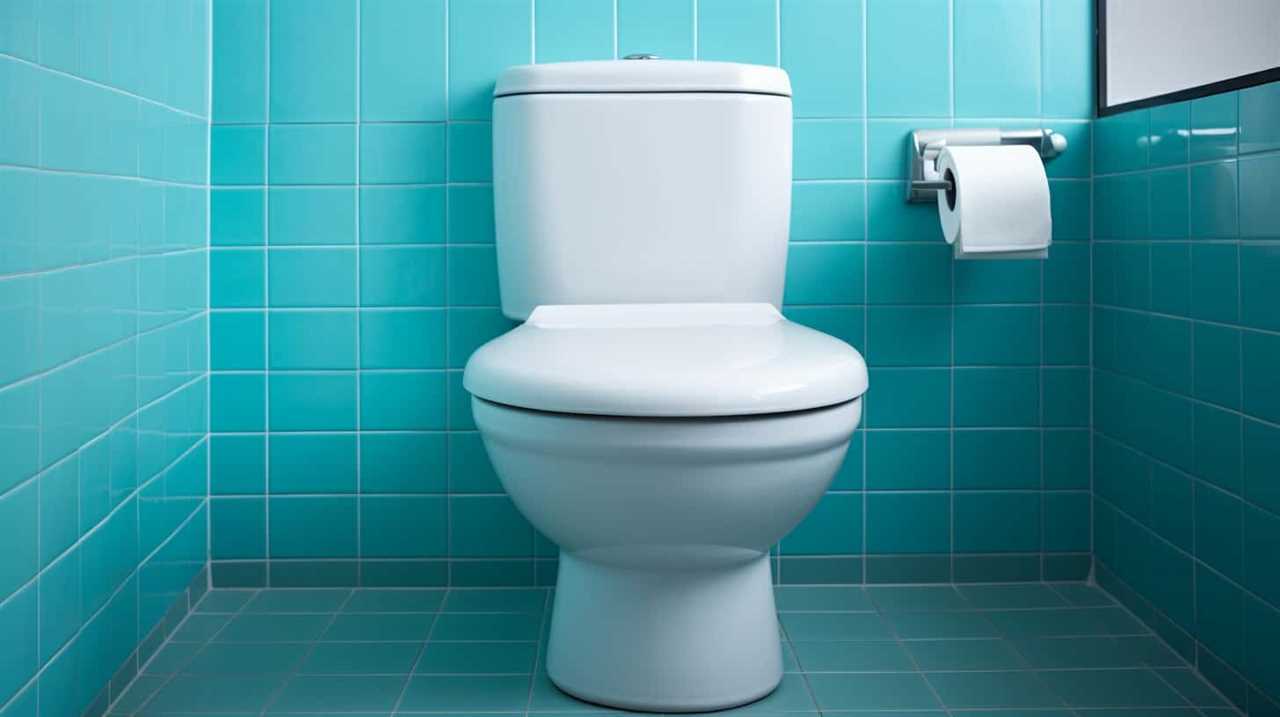
We’ve all dealt with the annoyance of a stained toilet bowl. However, maintaining a spotless bathroom is now effortless, thanks to an automatic toilet bowl cleaner.
In this article, we’ll explore the benefits of using an automatic toilet bowl cleaner, how it works, and how to choose the right one for your needs.
We’ll also discuss proper installation and maintenance techniques, as well as troubleshooting common issues.
Get ready to master the art of toilet bowl cleanliness!
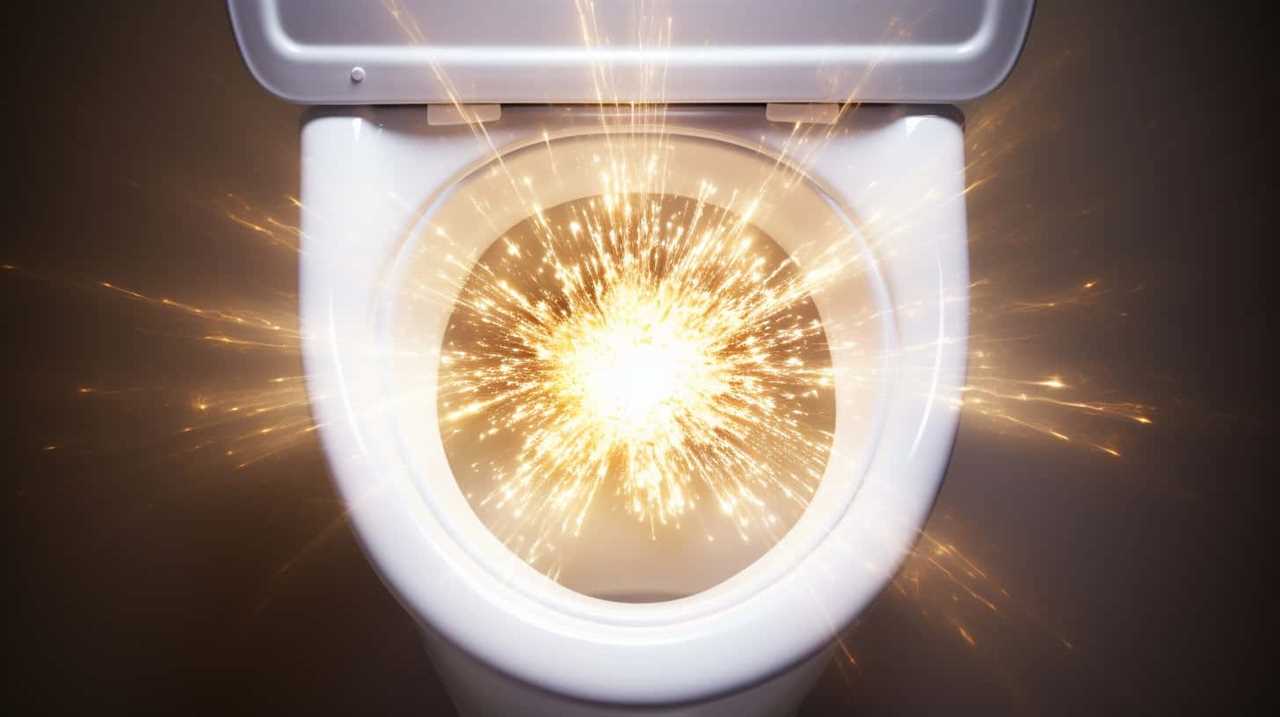
Key Takeaways
- Automatic toilet bowl cleaners save time and effort by eliminating the need for manual scrubbing.
- They continuously release cleaning agents to prevent the build-up of stains, mineral deposits, and odors.
- These cleaners have self-cleaning mechanisms and deodorizers for enhanced effectiveness.
- They maintain cleanliness and hygiene in restrooms, especially in large establishments, providing a fresh and hygienic environment for users.
Benefits of an Automatic Toilet Bowl Cleaner
In this section, we’ll explore the advantages of using an automatic toilet bowl cleaner.
Automatic toilet bowl cleaners offer several benefits that make them highly effective in maintaining cleanliness and hygiene in the restroom.
Firstly, their automated operation eliminates the need for manual scrubbing, saving time and effort. This is especially advantageous for large establishments with multiple restrooms.
Secondly, these cleaners are designed to continuously release cleaning agents, ensuring a consistent and thorough cleaning process. This helps to prevent the build-up of stains, mineral deposits, and unpleasant odors.

Additionally, automatic toilet bowl cleaners often come equipped with features such as self-cleaning mechanisms and deodorizers, further enhancing their effectiveness.
How an Automatic Toilet Bowl Cleaner Works
To understand how an automatic toilet bowl cleaner works, let’s delve into the mechanism that enables its efficient cleaning action.
The effectiveness of automatic cleaners in maintaining toilet bowl cleanliness lies in their ability to target and eliminate stubborn stains and germs. These devices typically consist of a holder and a cleaning agent.
The holder is attached inside the toilet bowl and houses the cleaning agent, which is usually in the form of a gel or tablet. When the toilet is flushed or when water flows, the cleaning agent is released, adhering to the bowl’s surface.

The chemical composition of the cleaner allows it to break down and dissolve stains, while also disinfecting the bowl. This mechanism ensures that the toilet bowl remains clean and hygienic, providing an optimal environment for the users.
Choosing the Right Automatic Toilet Bowl Cleaner
When selecting an automatic toilet bowl cleaner, we consider various factors to ensure we choose the most suitable option. There are several features to consider when buying an automatic toilet bowl cleaner.
One important factor is the cleaning power of the cleaner. Look for a cleaner that’s specifically designed to remove tough stains and eliminate odors.
Another feature to consider is the duration of the cleaner’s effectiveness. Some cleaners provide continuous cleaning for up to a month, while others may require more frequent replacement.

Additionally, eco-friendly options for automatic toilet bowl cleaners are becoming increasingly popular. Look for cleaners that are biodegradable and made from natural ingredients.
Transitioning into the next section, proper installation and maintenance are crucial for maximizing the performance of your automatic toilet bowl cleaner.
Proper Installation and Maintenance of an Automatic Toilet Bowl Cleaner
To maximize the performance of our automatic toilet bowl cleaner, we consistently and diligently install and maintain it with proper care and attention. Here are some installation tips and recommended cleaning schedule to ensure optimal results:
- Installation Tips:
- Start by cleaning the toilet bowl thoroughly to remove any existing stains or residue.
- Follow the manufacturer’s instructions carefully to ensure correct placement and attachment of the automatic cleaner.
- Make sure the cleaner is securely fastened to the rim of the toilet bowl to prevent it from falling into the water.
- Recommended Cleaning Schedule:
- Regularly check the cleaner to ensure it’s functioning properly and has an adequate supply of cleaning solution.
- Depending on the usage, it’s typically recommended to replace the cleaner every 1-3 months for optimal cleaning performance.
- Additionally, consider performing a deep cleaning of the toilet bowl every few weeks to maintain cleanliness and prevent buildup.
Troubleshooting Common Issues With Automatic Toilet Bowl Cleaners
While troubleshooting common issues with automatic toilet bowl cleaners, we’ve found that a common problem arises when the cleaning solution runs out too quickly. This can be frustrating for users who expect the cleaner to last for a certain period of time.
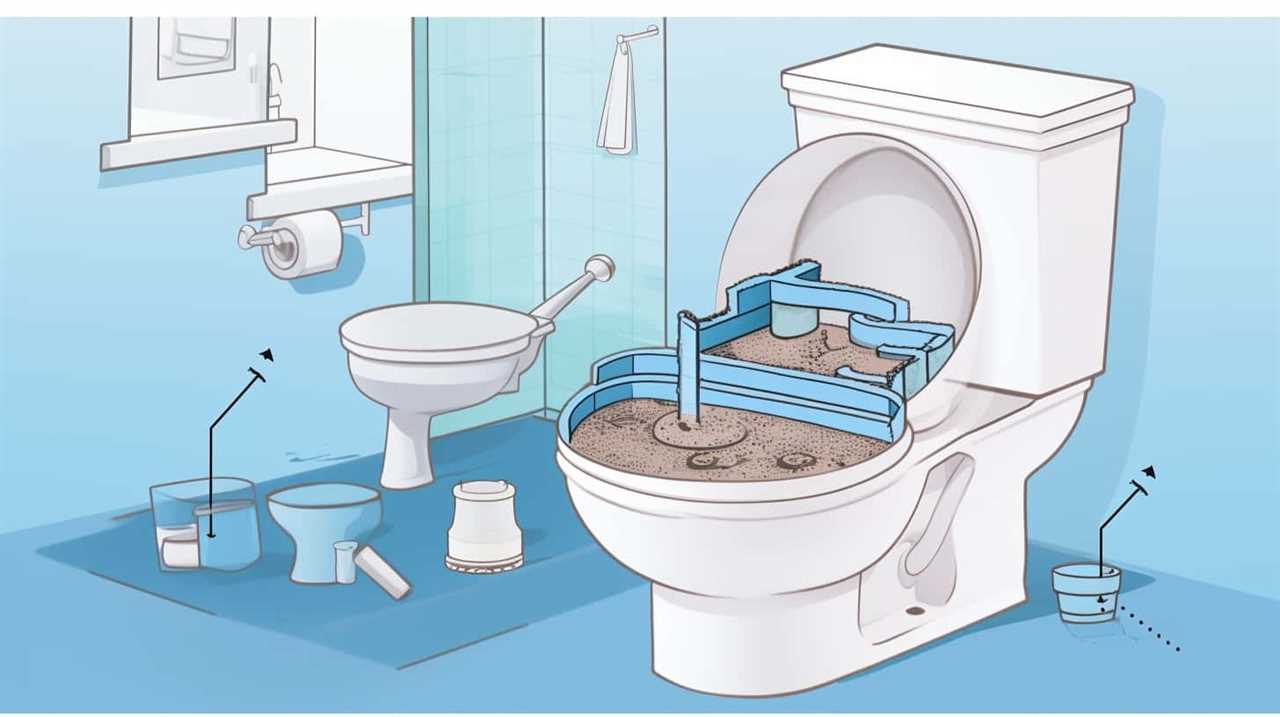
To address this issue, it’s important to check the instructions for the specific cleaner being used. Some cleaners may require more frequent refills than others. Additionally, it’s advisable to check the dispensing mechanism of the cleaner to ensure it’s working properly. If the cleaner isn’t dispensing the solution evenly or consistently, it may need to be adjusted or replaced.
Frequently Asked Questions
Can an Automatic Toilet Bowl Cleaner Damage My Toilet?
Using an automatic toilet bowl cleaner may potentially damage your toilet due to its toxicity levels. However, there are alternative cleaning methods available that can effectively clean your toilet without causing any harm.
How Long Does an Automatic Toilet Bowl Cleaner Last Before Needing to Be Replaced?
An automatic toilet bowl cleaner typically lasts for several months before needing to be replaced. It works by releasing cleaning agents into the water, which then dissolve stains and prevent buildup. There are various types available, including tablets, gels, and cartridges.
Are Automatic Toilet Bowl Cleaners Safe to Use if I Have a Septic System?
Automatic toilet bowl cleaners are safe for septic systems. Their effectiveness on different types of stains varies, but they can be cost-effective compared to traditional cleaning methods. Our expertise ensures mastery in this technical and analytical subject.
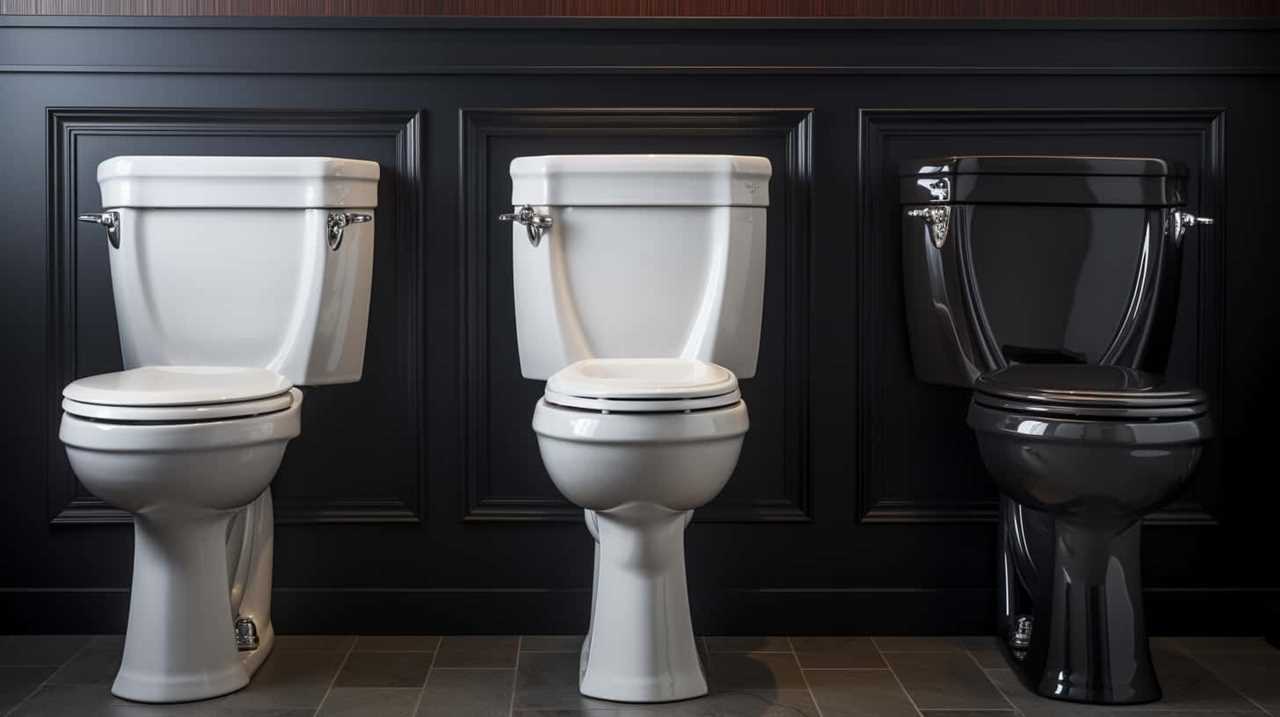
Can I Use an Automatic Toilet Bowl Cleaner With Colored or Decorated Toilet Bowls?
Yes, you can use an automatic toilet bowl cleaner with colored or decorated toilet bowls. However, be cautious as certain cleaners may contain chemicals that could potentially damage or discolor the surface.
Are There Any Environmental Concerns Associated With Using Automatic Toilet Bowl Cleaners?
There are environmental concerns associated with using automatic toilet bowl cleaners. We recommend considering alternative options to minimize the environmental impact, such as using natural cleaners or reducing the frequency of use.
Conclusion
In conclusion, an automatic toilet bowl cleaner is a highly efficient and convenient solution for maintaining cleanliness and hygiene in your bathroom.
By effortlessly eliminating stains and odors, it symbolizes the liberation from the tedious task of manual cleaning.
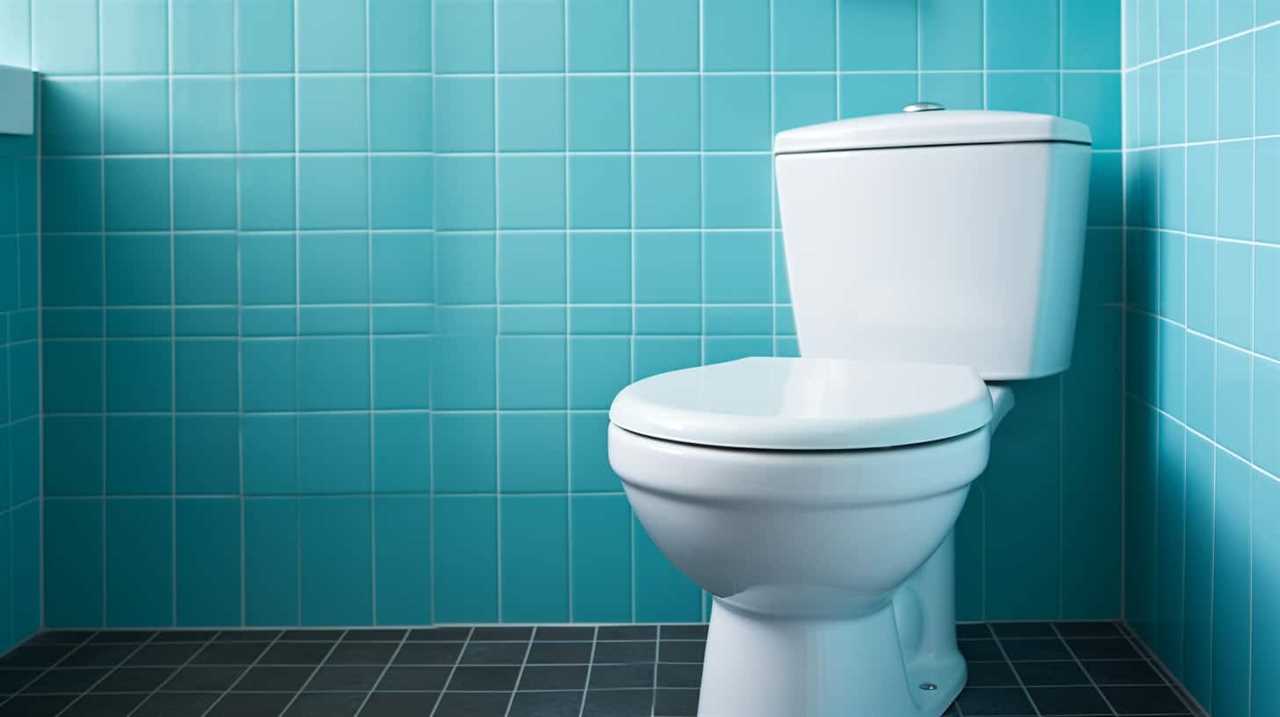
With its advanced technology and ease of use, it ensures a pristine toilet bowl without any hassle.
Choose the right cleaner, install and maintain it properly, and bid farewell to common issues.
Experience the satisfaction of a sparkling clean toilet bowl with an automatic cleaner.
With an impeccable eye for detail and a passion for bathroom-related, Ava leads our editorial team gracefully and precisely.
Under her guidance, Best Modern Toilet has flourished as the go-to resource for modern bathroom enthusiasts. In her free time, you might find Ava exploring antique shops and looking for vintage bathroom fixtures to add to her collection.
Bathroom Enhancements
What Do You Do When You Flush Your Glasses Down the Toilet

We have all experienced that sinking feeling when our beloved glasses unexpectedly fall into the toilet. But do not worry, we are here to help you navigate through this unfortunate accident.
In this article, we will share our expert knowledge on how to retrieve, clean, and safeguard your beloved eyewear. So, take a deep breath and prepare to become a master of toilet-induced glasses recovery.
Key Takeaways
- Immediately stop and take a deep breath
- Call for professional help, such as a plumber
- Refrain from further flushing if attempts are unsuccessful
- Seek emergency plumber assistance for proper repairs
Stay Calm and Assess the Situation
To begin with, we should immediately stop and take a deep breath, reminding ourselves to stay calm and carefully assess the situation when we flush our glasses down the toilet. It may seem like a disastrous moment, but panicking will only escalate the issue.
The first step is to call for professional help. Plumbers have the expertise and tools to handle such situations effectively. While waiting for their arrival, we can try using a plunger to unclog the toilet. Plunging with steady pressure can dislodge the glasses and restore the toilet’s normal function.
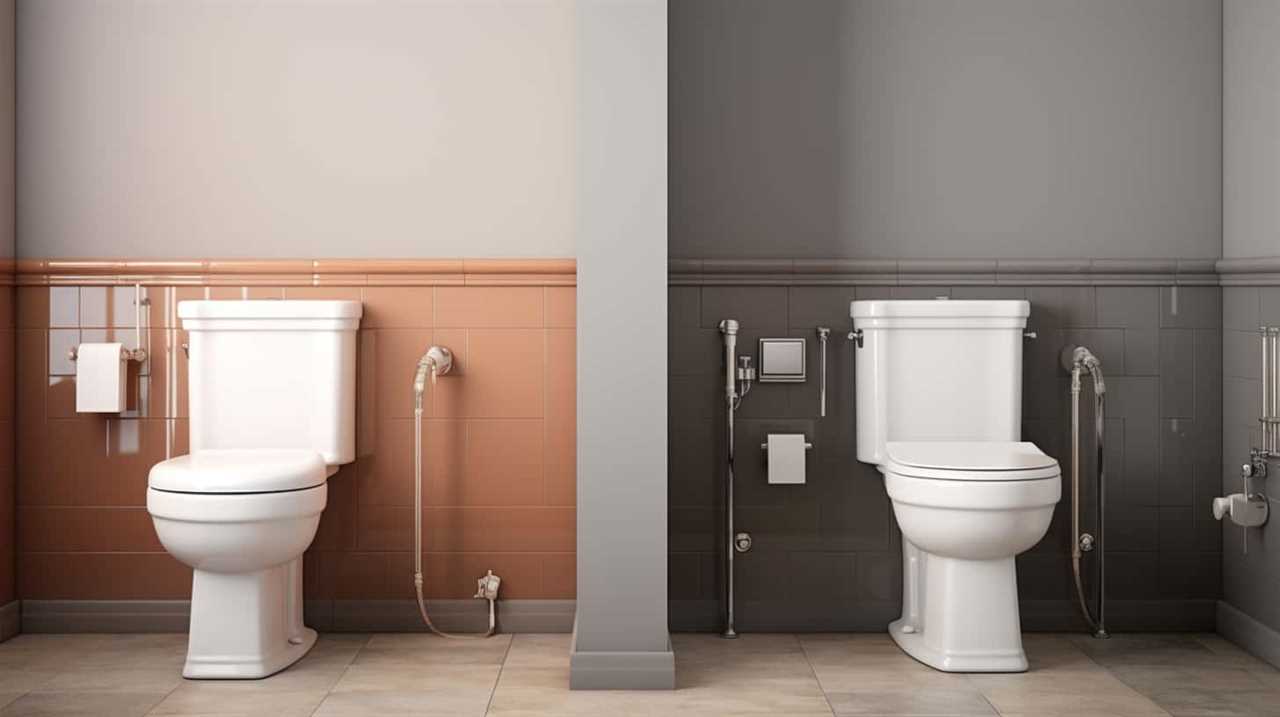
However, if our attempts are unsuccessful or if the situation worsens, it’s crucial to refrain from further flushing to prevent any potential damage.
Now, let’s move on to the next section and explore how to stop the toilet from flushing further.
Stop the Toilet From Flushing Further
After assessing the situation and calling for professional help, our next step is to take immediate action to stop the toilet from flushing further. To prevent any further damage and potential flooding, here are some effective methods to consider:
- Shut off the water supply: Locate the shut-off valve behind the toilet and turn it clockwise to stop the water flow.
- Lift the float: Open the toilet tank and locate the float, usually a plastic ball or cup. Lifting it will stop the toilet from refilling.
- Block the flush valve: Insert a large object, such as a plunger or a bucket, into the flush valve at the bottom of the tank. This will prevent the water from draining into the bowl.
While these DIY methods can temporarily stop the toilet from flushing, it’s still crucial to seek emergency plumber assistance to properly fix the underlying issue. Remember, attempting complex repairs without proper knowledge can lead to further damage or injury.

Retrieve Your Glasses Safely From the Toilet
First, we’ll carefully assess the situation and determine the best approach to retrieve our glasses safely from the toilet. Plumbers’ advice on avoiding toilet mishaps can be helpful in preventing such accidents, but when they do occur, it’s important to address the issue promptly and with caution.
DIY methods for retrieving small objects from toilets can be attempted, but it’s crucial to exercise care to avoid further damage and potential injury. One method involves using a plunger, gently applying pressure to create suction and dislodge the object. Another option is to use a wire coat hanger, bending it into a hook shape and carefully maneuvering it to retrieve the glasses.
However, it’s advisable to contact a professional plumber if the glasses can’t be safely retrieved using these methods.
Clean and Sanitize Your Glasses Thoroughly
Our first step in cleaning and sanitizing our glasses thoroughly is to gather the necessary materials. To properly clean and sanitize our glasses, we’ll need the following:
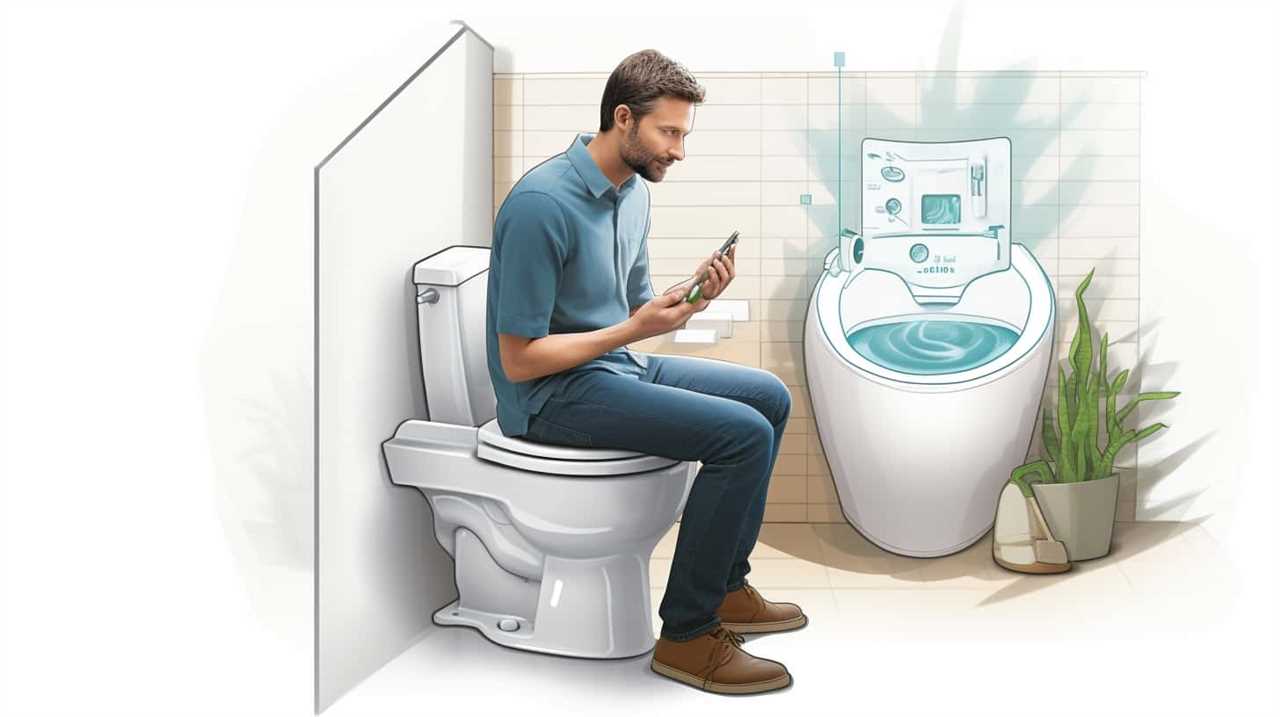
- Mild dish soap: This will help remove any dirt and oils from the lenses and frames.
- Microfiber cloth: This soft cloth is perfect for cleaning and polishing the glasses without scratching the lenses.
- Warm water: Using warm water will help break down any stubborn stains or residue on the glasses.
- Lens cleaning solution: This solution is specifically designed to clean and sanitize eyeglass lenses, providing a streak-free finish.
- Soft-bristled brush: This brush can be used to gently remove any debris or particles from the frames and hinges.
To clean and sanitize our glasses thoroughly, we should follow these steps:
- Rinse the glasses under warm water to remove any loose debris.
- Apply a small amount of mild dish soap to the lenses and frames.
- Gently scrub the glasses using a soft-bristled brush, focusing on any stubborn stains or areas of dirt.
- Rinse the glasses again under warm water to remove the soap.
- Apply a few drops of lens cleaning solution to each lens.
- Use a microfiber cloth to gently wipe the lenses in a circular motion, ensuring all surfaces are clean and dry.
- Finally, store the glasses properly in a protective case to prevent any further dirt or damage.
Prevent Future Incidents and Protect Your Glasses
To prevent future incidents and protect our glasses, we should consistently and consciously develop good habits.
One important habit is to keep our glasses in a safe and secure place when not in use. Investing in a waterproof eyeglass case can provide an extra layer of protection, especially in situations where water or other liquids may be present.
Additionally, regular maintenance and care can help extend the lifespan of our glasses. This includes cleaning them properly and avoiding exposing them to harsh chemicals or extreme temperatures.

In the unfortunate event that our glasses do get damaged, it’s essential to know about reliable eyeglass repair services that can help fix any issues promptly.
Frequently Asked Questions
How Do I Stay Calm and Assess the Situation if I Flushed My Glasses Down the Toilet in a Public Restroom?
When we accidentally flush our glasses down the toilet in a public restroom, it can be stressful. However, by staying calm and assessing the situation, we can cope with the stress and maintain a positive mindset.
Is There a Way to Stop the Toilet From Flushing Further if the Flush Mechanism Is Broken or Malfunctioning?
When the flush mechanism malfunctions, there are a few ways to fix it. One option is to check the water supply valve and ensure it is fully open. Additionally, you can inspect the flapper and chain for any issues.
Can I Use Any Tool to Retrieve My Glasses Safely From the Toilet, or Are There Specific Techniques I Should Follow?
Using alternative tools such as a plunger or a plumbing snake, we can attempt to retrieve glasses from the toilet. However, if unsuccessful, it is advisable to hire a professional plumber for safe and efficient removal.
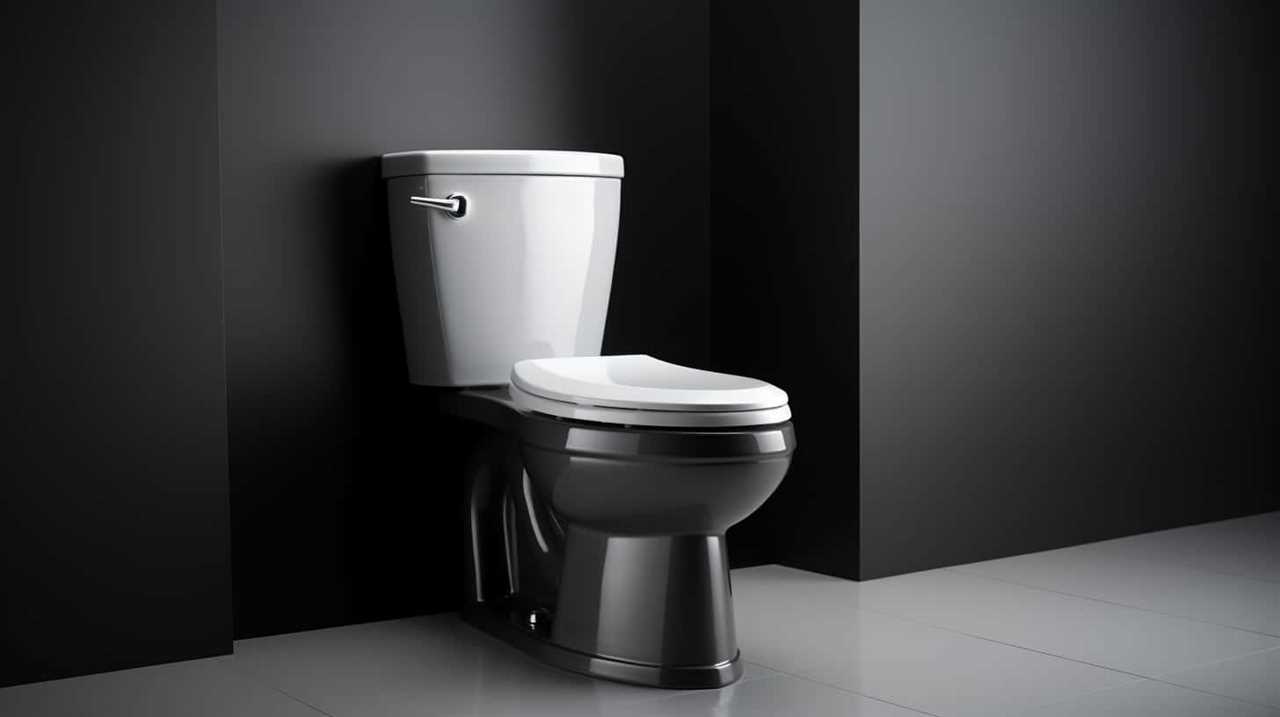
Are There Specific Cleaning Products or Methods I Should Use to Thoroughly Sanitize My Glasses After Retrieving Them From the Toilet?
When it comes to properly sanitizing our glasses after retrieving them from the toilet, it is important to use specific cleaning products and methods. Ensuring thorough sanitation is key to maintaining hygiene and preventing any potential health risks.
What Preventive Measures Can I Take to Avoid Future Incidents of Accidentally Flushing My Glasses Down the Toilet, and How Can I Protect My Glasses in Case of Emergencies?
To prevent future incidents of accidentally flushing our glasses down the toilet, we can develop a habit of removing them before using the bathroom. Additionally, we can protect our glasses by keeping them in a secure case when not in use.
Conclusion
So, the unthinkable has happened – you accidentally flushed your glasses down the toilet. But fear not, for we’ve guided you through the steps to retrieve and sanitize your precious eyewear.
Remember, accidents happen, but with a cool head and a bit of know-how, you can conquer any toilet-related mishap. And let this be a lesson to all – keep your glasses far away from the porcelain throne!

Stay vigilant, my friends.
With an impeccable eye for detail and a passion for bathroom-related, Ava leads our editorial team gracefully and precisely.
Under her guidance, Best Modern Toilet has flourished as the go-to resource for modern bathroom enthusiasts. In her free time, you might find Ava exploring antique shops and looking for vintage bathroom fixtures to add to her collection.
Bathroom Enhancements
Can You Flush Tobacco Guts Down the Toilet

- Are there any alternative methods of disposing tobacco guts that are more convenient for homeowners?
- Can flushing tobacco guts down the toilet lead to clogging or plumbing issues in older houses?
As inquisitive observers, we frequently ponder the correct ways to dispose of different substances. Today, we explore the puzzling question: is it safe to flush tobacco remnants down the toilet?
In this informative article, we will explore the potential risks to our plumbing system, discuss alternative disposal options, and shed light on the environmental concerns surrounding this practice.
Join us as we navigate the intricacies of tobacco disposal, aiming to provide you with the mastery of this subject matter.
Key Takeaways
- Flushing tobacco guts down the toilet can lead to accumulation in the toilet bowl, clogs pipes, reduces water flow, and requires professional intervention.
- Alternatives to flushing tobacco guts include recycling, composting, extraction of valuable materials, and reduction of waste in landfills.
- Flushing tobacco guts can have negative environmental impacts such as water pollution, soil contamination, ecological disruption, and contamination of water sources.
- Best practices for tobacco disposal include using designated waste bins, considering composting, minimizing environmental impact, and following proper disposal practices.
Risks of Flushing Tobacco Guts
Flushing tobacco guts down the toilet poses potential risks to our plumbing system. When tobacco guts are flushed, they can accumulate in the toilet bowl and cause clogs. The sticky nature of the tobacco can easily adhere to the pipes, leading to blockages and reduced water flow.

These clogs can be difficult to remove and may require professional intervention, resulting in additional costs. Moreover, the buildup of tobacco residue in the pipes can create an ideal environment for the growth of bacteria and mold, which can further compromise the plumbing system.
Therefore, it’s important to avoid flushing tobacco guts down the toilet to prevent clog potential and maintain the proper functioning of our plumbing system.
Moving forward, let’s explore the impact of flushing tobacco guts on our plumbing system.
Impact on Plumbing System
As we continue our discussion on the risks of flushing tobacco guts, it’s important to understand the impact that this practice can have on our plumbing system.
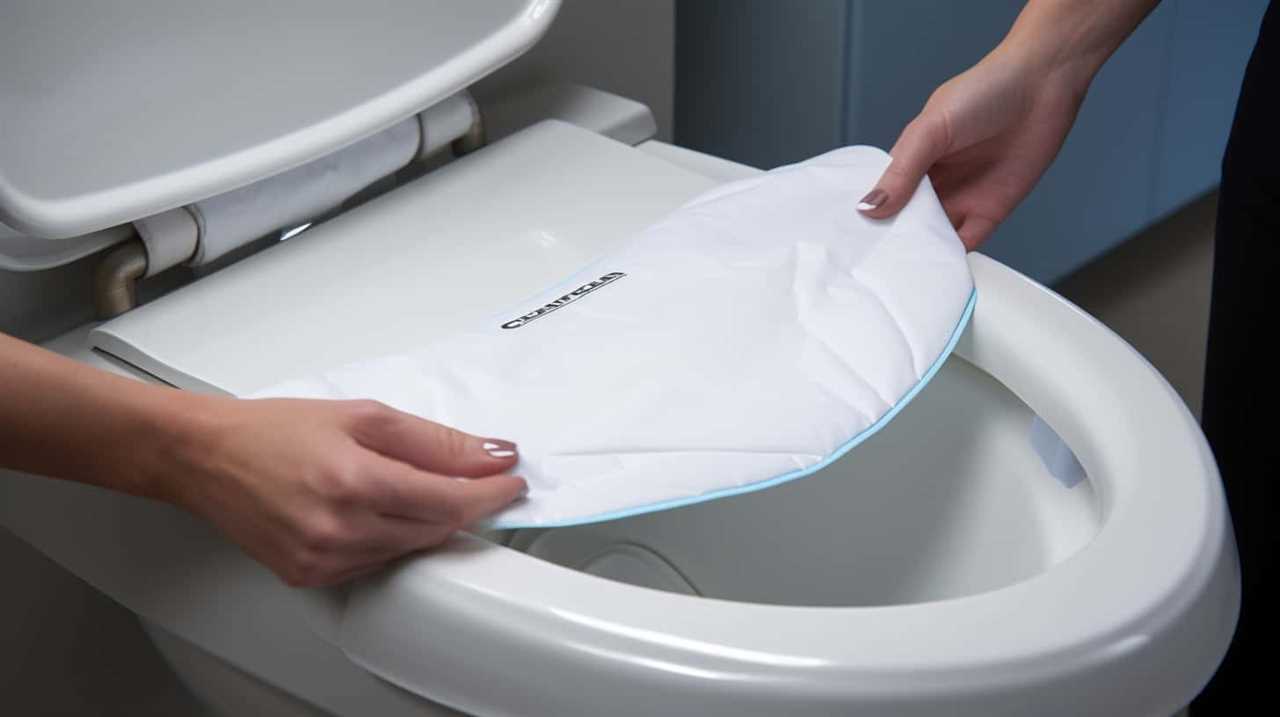
Flushing tobacco guts down the toilet can lead to various issues that may require costly plumbing maintenance. Here are three reasons why this practice should be avoided:
- Clogging: Tobacco guts can easily accumulate in the pipes and cause blockages, leading to slow drains or even complete plumbing system failure.
- Pipe Damage: The fibrous nature of tobacco can cause it to get stuck and wrap around the pipes, potentially causing damage over time.
- Odor and Bacteria: Tobacco remnants can create unpleasant odors and attract bacteria, leading to potential health hazards and the need for thorough cleaning.
Considering these potential problems, it’s crucial to prioritize clogging prevention and proper plumbing maintenance.
Transitioning into the next section, let’s explore alternatives to flushing tobacco guts that can help avoid these issues.
Alternatives to Flushing Tobacco Guts
To avoid the potential issues associated with flushing tobacco guts, we can explore alternative methods of disposal. Two effective options for disposing of tobacco guts are tobacco gut recycling and composting.
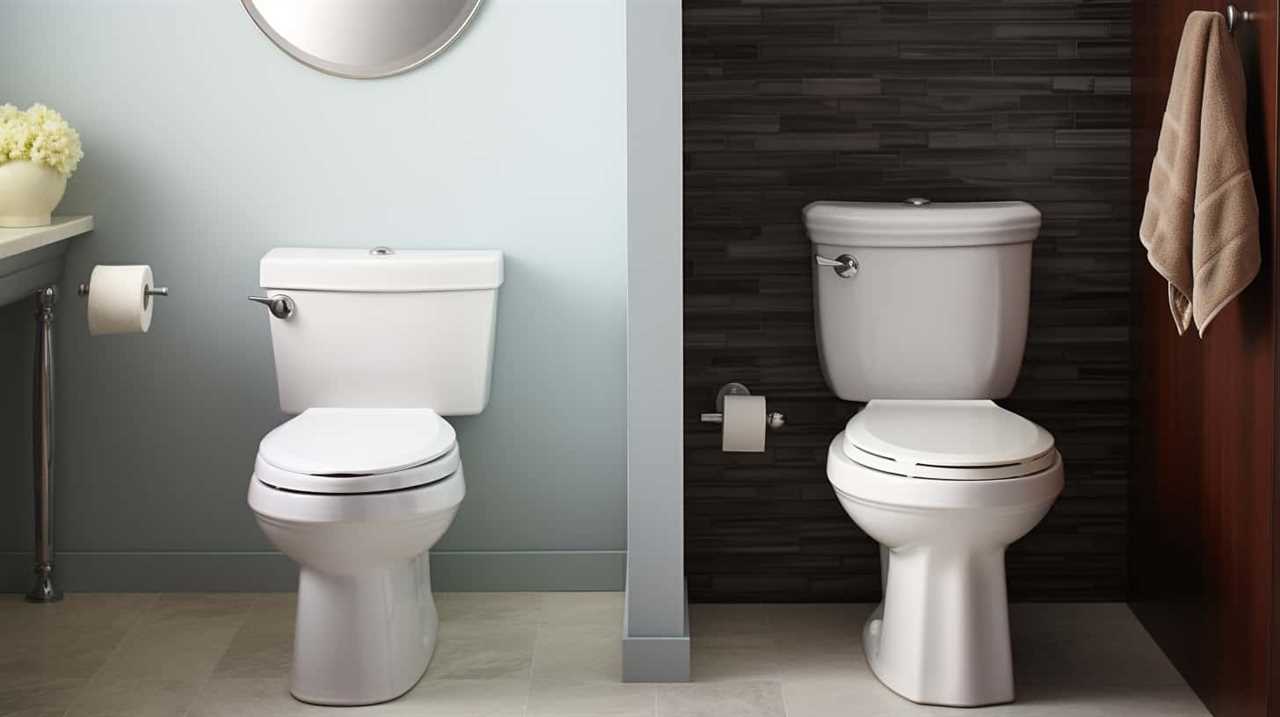
Tobacco gut recycling involves separating the tobacco components from the guts and sending them to specialized recycling facilities. These facilities can extract valuable materials from the tobacco, such as nicotine and cellulose, which can be repurposed for various applications.
Composting is another eco-friendly option for disposing of tobacco guts. By mixing tobacco guts with other organic materials like food waste, leaves, and grass clippings, the decomposition process can be accelerated. The resulting compost can then be used as a nutrient-rich soil amendment for gardening and landscaping purposes.
Here is a table summarizing the pros and cons of tobacco gut recycling and composting:
| Method | Pros | Cons |
|---|---|---|
| Tobacco gut recycling | – Extracts valuable materials | – Requires specialized facilities |
| – Reduces waste in landfills | – May have limited availability | |
| Composting | – Eco-friendly and sustainable | – Requires proper composting setup |
| – Produces nutrient-rich compost | – Takes time for decomposition |
Both tobacco gut recycling and composting offer viable alternatives to flushing tobacco guts down the toilet. Consider these methods to reduce waste and contribute to a more sustainable environment.
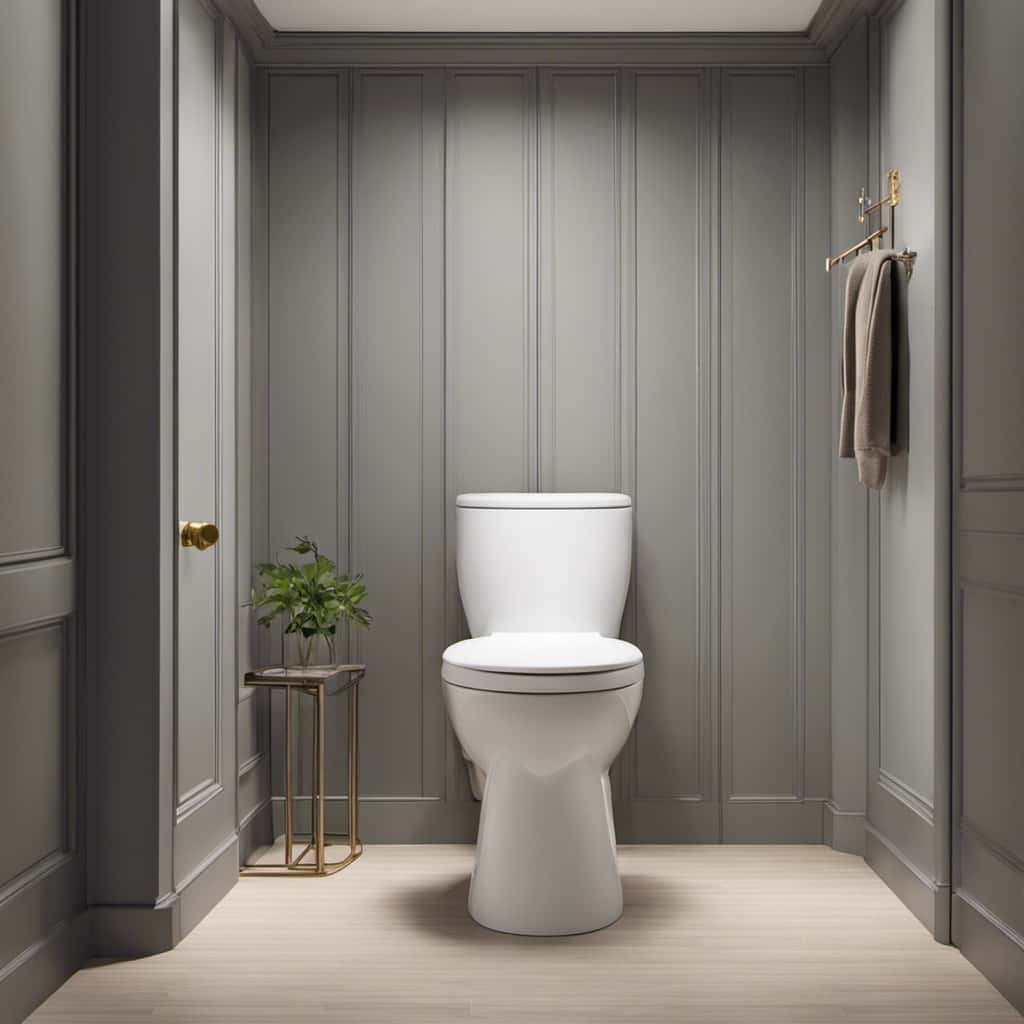
Environmental Concerns
When it comes to disposing of tobacco guts, we should be aware of the environmental concerns associated with their improper disposal. Carelessly flushing tobacco guts down the toilet can lead to water pollution and soil contamination. Here are some reasons why we need to be cautious:
- Water pollution: The chemicals present in tobacco can contaminate water sources, affecting aquatic life and potentially harming human health if consumed.
- Soil contamination: Tobacco guts contain harmful substances such as nicotine and heavy metals, which can seep into the soil and disrupt its natural composition. This can have detrimental effects on plant growth and soil fertility.
- Ecological impact: Improper disposal of tobacco guts can disrupt the delicate balance of ecosystems, harming not only plants and animals but also the overall biodiversity.
It is crucial to dispose of tobacco guts properly, such as through designated waste bins or composting, to minimize the environmental impact and protect our ecosystems.
Best Practices for Tobacco Disposal
Proper tobacco disposal requires adherence to best practices to ensure environmental protection and minimize potential harm. When it comes to disposing of tobacco, it’s important to consider the health hazards associated with it.
First and foremost, it’s crucial to never flush tobacco guts down the toilet. Not only can it clog the plumbing system, but it can also contaminate water sources and harm aquatic life. Instead, there are safer disposal methods to consider.
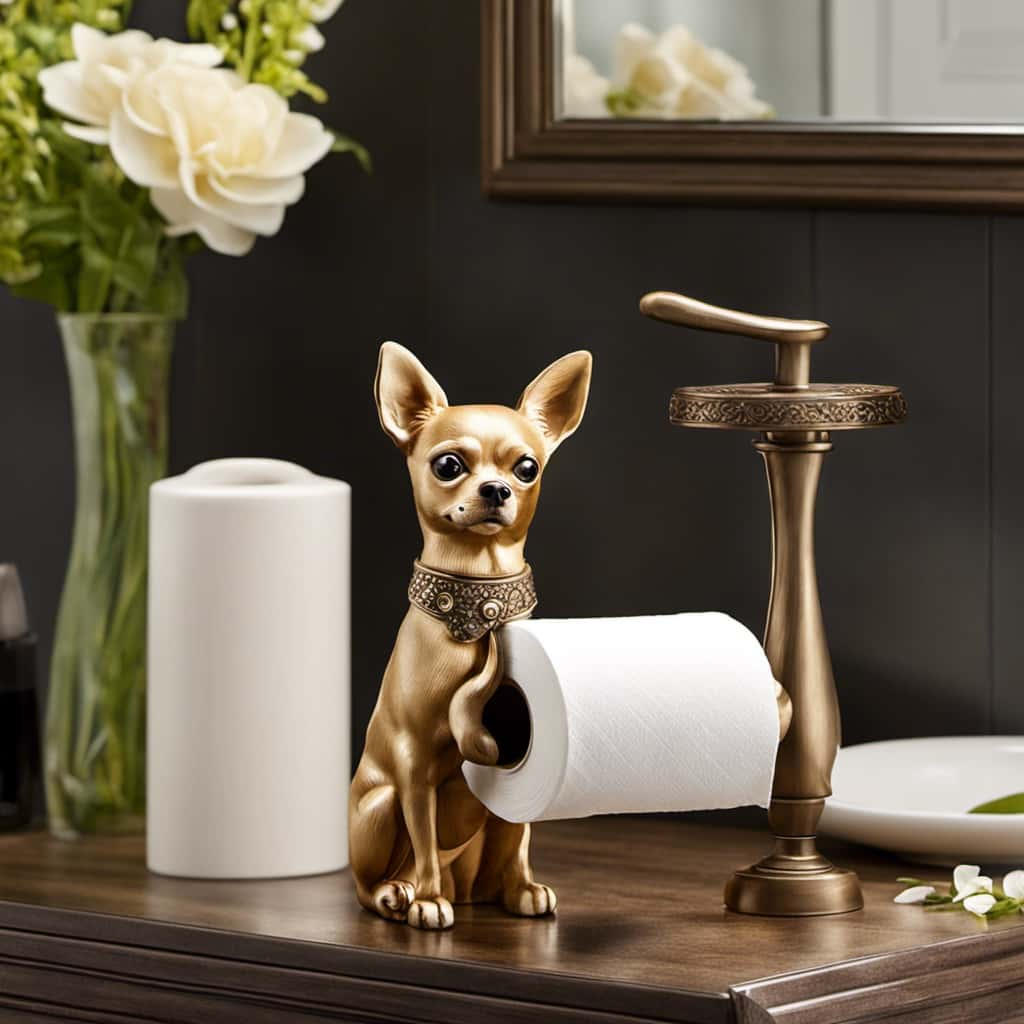
One option is to wrap the tobacco guts in a biodegradable bag and place it in the trash. Another option is to compost the tobacco guts, as they can provide nutrients for plants. Whichever method you choose, it’s important to handle tobacco waste with care to protect both the environment and your health.
Frequently Asked Questions
Can Flushing Tobacco Guts Down the Toilet Cause Any Health Risks for Humans?
Flushing tobacco guts down the toilet may pose health risks for humans. We should consider alternative methods of disposal that are more convenient for homeowners and be cautious of potential clogging or plumbing issues in older houses.
Will Flushing Tobacco Guts Down the Toilet Damage the Sewage System in My House?
Toilet flush vs. trash bin: Which is the best way to dispose of tobacco guts? Impact of tobacco gut disposal on septic systems: What you need to know. Flushing tobacco guts down the toilet may damage the sewage system in our house.
Are There Any Other Methods of Disposing of Tobacco Guts That Are More Environmentally Friendly?
Recycling options and composting methods can provide more environmentally friendly ways to dispose of tobacco guts. It’s important to explore these alternatives to reduce our impact on the environment and promote sustainability.

Can Flushing Tobacco Guts Down the Toilet Harm Aquatic Life?
Flushing tobacco guts down the toilet can have negative effects on water quality and ecological consequences. It is important to consider alternative methods of disposal that are more environmentally friendly and do not harm aquatic life.
What Are Some Tips for Properly Disposing of Tobacco Guts to Minimize Any Negative Impacts?
Proper disposal methods for tobacco guts include not flushing them down the toilet. Instead, consider recycling options like composting or using a designated tobacco waste bin. These alternatives minimize negative impacts on the environment.
Conclusion
In conclusion, it isn’t advisable to flush tobacco guts down the toilet due to the potential risks it poses to both your plumbing system and the environment. Instead, it’s recommended to dispose of tobacco guts in a more appropriate manner, such as using a designated tobacco waste bin or wrapping them securely in a plastic bag before placing them in the trash.
Remember, proper disposal practices are essential for maintaining a functional plumbing system and protecting our environment. As the saying goes, ‘A stitch in time saves nine.’
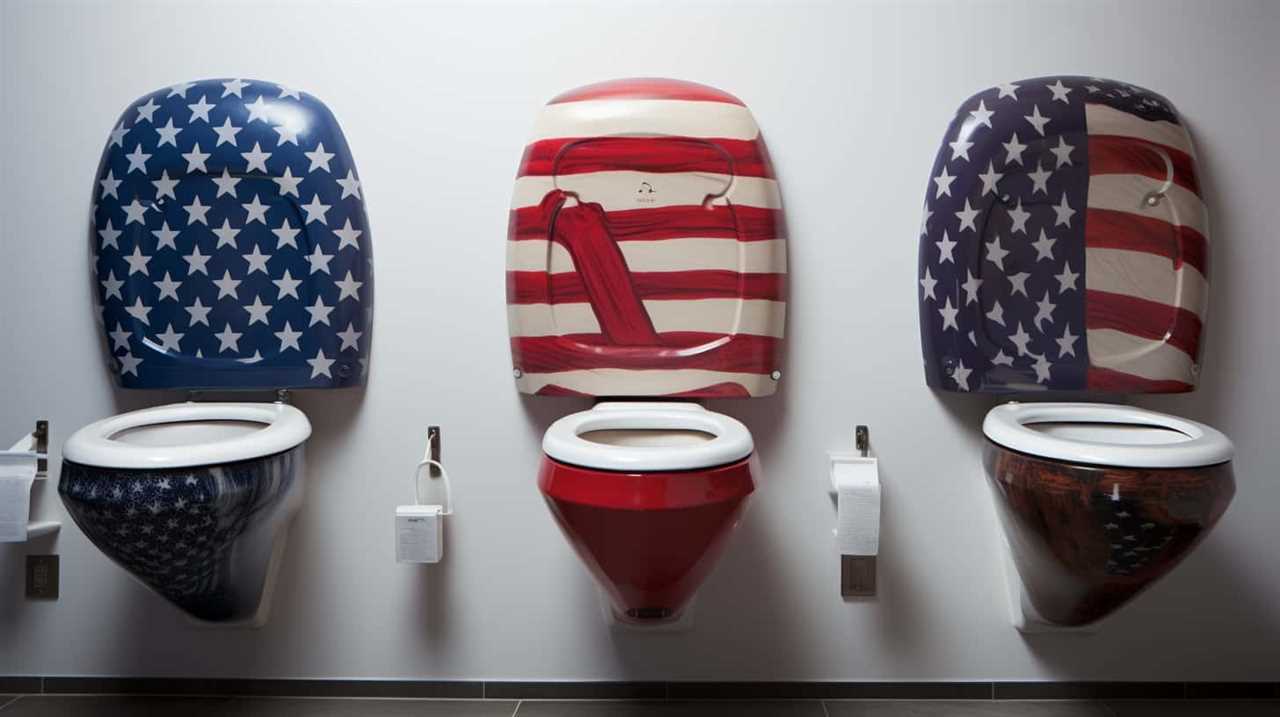
With an impeccable eye for detail and a passion for bathroom-related, Ava leads our editorial team gracefully and precisely.
Under her guidance, Best Modern Toilet has flourished as the go-to resource for modern bathroom enthusiasts. In her free time, you might find Ava exploring antique shops and looking for vintage bathroom fixtures to add to her collection.
Bathroom Enhancements
Is It Ok to Flush Tissue Paper Down the Toilet

Did you know that every day, millions of people around the world flush tissue paper down their toilets without considering the potential risks?
In this article, we will explore the impact of this seemingly harmless act on plumbing systems and the environment.
We will also discuss alternatives to flushing tissue paper and provide best practices for its proper disposal.
Get ready to delve into the world of toilet paper disposal and gain a deeper understanding of the consequences it can have.

Key Takeaways
- Flushing tissue paper can lead to blockages, backups, and costly repairs in septic tanks and wastewater treatment systems.
- Tissue paper can cause clogs and blockages in plumbing systems, particularly in septic tanks.
- Toilet paper production contributes to pollution, deforestation, and habitat destruction.
- Proper disposal of tissue paper in waste bins and adopting alternative options can help mitigate these risks and protect the environment.
Potential Risks of Flushing Tissue Paper
Our research has revealed several potential risks of flushing tissue paper down the toilet. When tissue paper is flushed, it can cause significant problems for both septic tanks and wastewater treatment systems.
In septic tanks, tissue paper doesn’t break down easily and can accumulate over time, leading to blockages and potential backups. This can result in costly repairs and the need for professional intervention.
Additionally, in wastewater treatment systems, tissue paper can clog pipes and hinder the efficient flow of wastewater. This can reduce the effectiveness of the treatment process and increase the risk of pollution in the surrounding environment.
Therefore, it’s important to dispose of tissue paper in the appropriate waste bins rather than flushing it down the toilet to avoid these potential risks to septic tanks and wastewater treatment systems.
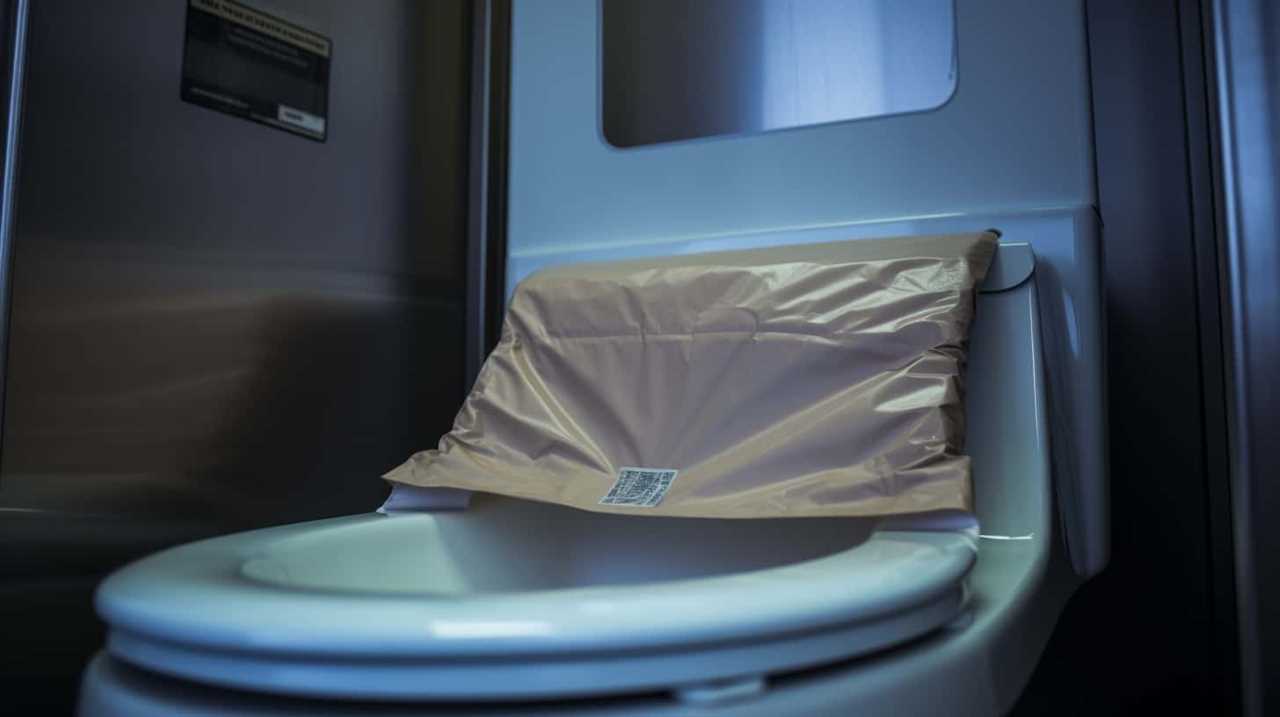
Impact on Plumbing Systems
Flushing tissue paper down the toilet can have a significant impact on plumbing systems when it causes clogs and blockages. This is especially true for septic tank systems, which are designed to handle human waste and biodegradable materials.
Tissue paper, although it may seem harmless, can accumulate and create clogging issues within the plumbing system. When tissue paper is flushed, it can become tangled and form clumps that obstruct the flow of water. Over time, these blockages can lead to expensive repairs and maintenance.
Septic tanks are particularly susceptible to these issues, as the accumulated tissue paper can interfere with the natural breakdown of waste. Therefore, it’s crucial to dispose of tissue paper in the appropriate manner, such as through regular garbage disposal. Understanding the impact on plumbing systems can help prevent clogs and blockages, ultimately avoiding costly repairs and maintenance.
Now, let’s delve into the environmental consequences of flushing tissue paper down the toilet.
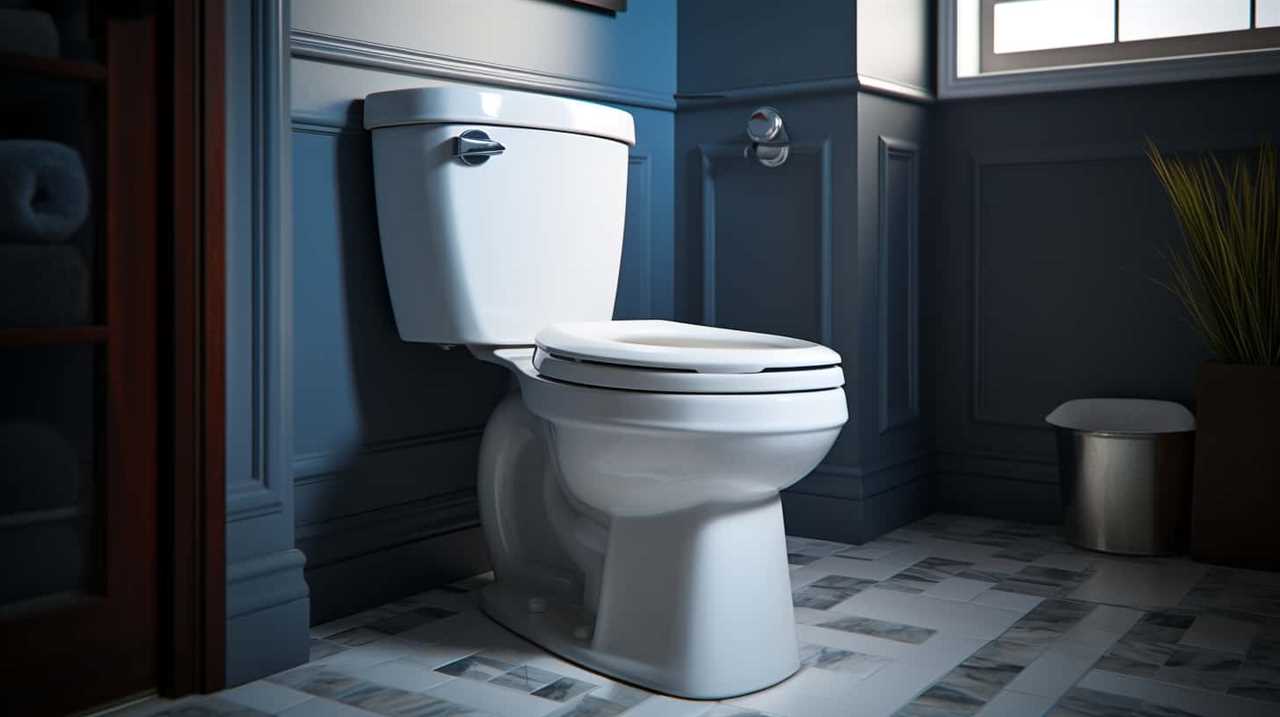
Environmental Consequences
What are the environmental consequences of flushing tissue paper down the toilet?
Flushing tissue paper down the toilet can have significant environmental consequences due to the production of toilet paper and its impact on deforestation. Here are three sub-lists to convey a deeper understanding of these consequences:
- Toilet paper production: The production of toilet paper requires vast amounts of water, energy, and chemicals. This manufacturing process contributes to air and water pollution, as well as greenhouse gas emissions.
- Deforestation: The demand for toilet paper leads to the cutting down of millions of trees. This deforestation disrupts ecosystems, reduces biodiversity, and contributes to climate change by reducing the planet’s ability to absorb carbon dioxide.
- Habitat destruction: Deforestation for toilet paper production destroys the natural habitats of countless species, threatening their survival and disrupting delicate ecological balances.
Therefore, flushing tissue paper down the toilet not only affects plumbing systems but also has far-reaching environmental consequences related to toilet paper production and deforestation.
Alternatives to Flushing Tissue Paper
There are several alternatives to flushing tissue paper down the toilet. Instead of contributing to environmental pollution, we can opt for eco-friendly options and biodegradable products. These alternatives not only help protect the environment but also promote sustainable living practices.

| Eco-Friendly Options | Biodegradable Products |
|---|---|
| Use reusable cloths | Bamboo toilet paper |
| Install bidet | Recycled toilet paper |
| Use wet wipes | Hemp toilet paper |
| Try family cloth | Tree-free toilet paper |
Best Practices for Toilet Paper Disposal
To ensure proper toilet paper disposal, we should always dispose of it in a trash bin instead of flushing it down the toilet. Proper disposal not only prevents clogged pipes and sewage backups but also contributes to environmental sustainability.
Here are some best practices for toilet paper disposal:
- Choose biodegradable options: Opt for toilet paper that’s labeled as biodegradable or made from recycled materials. These options break down more easily in the waste stream, reducing the environmental impact.
- Separate from other waste: Place used toilet paper in a separate bag or bin to prevent contamination with other waste. This helps maintain hygiene and facilitates proper disposal.
- Seal and dispose: Once the toilet paper is used, seal it in a bag before disposing of it in the trash. This minimizes odors and prevents any accidental spillage.
Frequently Asked Questions
Can I Flush Tissue Paper if It’s Specifically Labeled as "Flushable"?
We should not flush tissue paper, even if it’s labeled as ‘flushable.’ It can still cause problems for septic systems. The impact of flushable tissue paper on septic systems needs to be carefully considered.
What Are the Potential Risks of Flushing Tissue Paper Down the Toilet?
What potential hazards can arise from flushing tissue paper down the toilet? Are there any risks of plumbing problems? Flushing tissue paper can lead to clogged pipes, sewer backups, and damage to wastewater treatment systems.
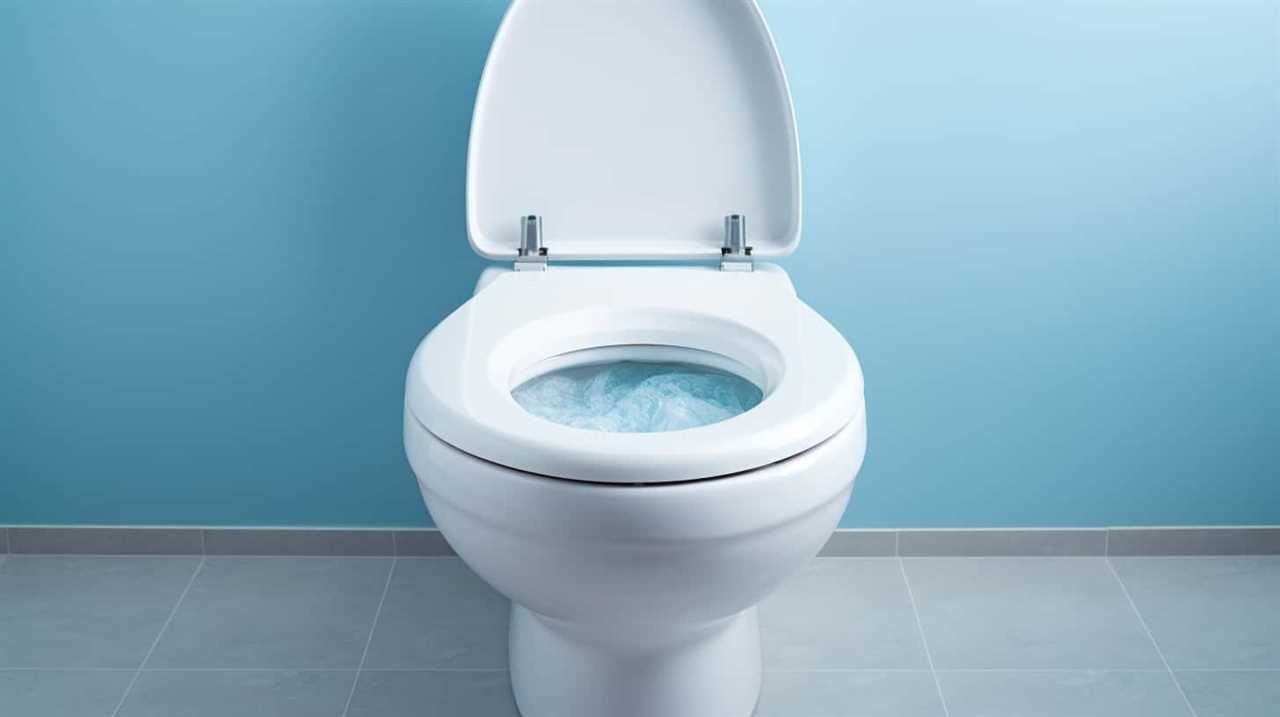
How Does Flushing Tissue Paper Affect Septic Systems?
Flushing tissue paper can lead to potential septic problems and impact wastewater treatment plants. It is important to consider the negative consequences of this action and find alternative disposal methods to maintain the efficiency of our systems.
Are There Any Environmentally-Friendly Alternatives to Flushing Tissue Paper?
Eco friendly options exist as reusable alternatives to flushing tissue paper. These alternatives reduce waste and have a lower environmental impact. It is important to consider these options for a more sustainable approach to personal hygiene.
What Are the Best Practices for Disposing of Tissue Paper in Public Restrooms?
In public restrooms, it is important to follow best practices and hygiene standards when disposing of tissue paper. Properly disposing of tissue paper in designated bins helps maintain cleanliness and prevents plumbing issues.
Conclusion
In conclusion, it isn’t advisable to flush tissue paper down the toilet due to the potential risks it poses. Flushing tissue paper can lead to clogged plumbing systems, causing inconvenience and costly repairs.
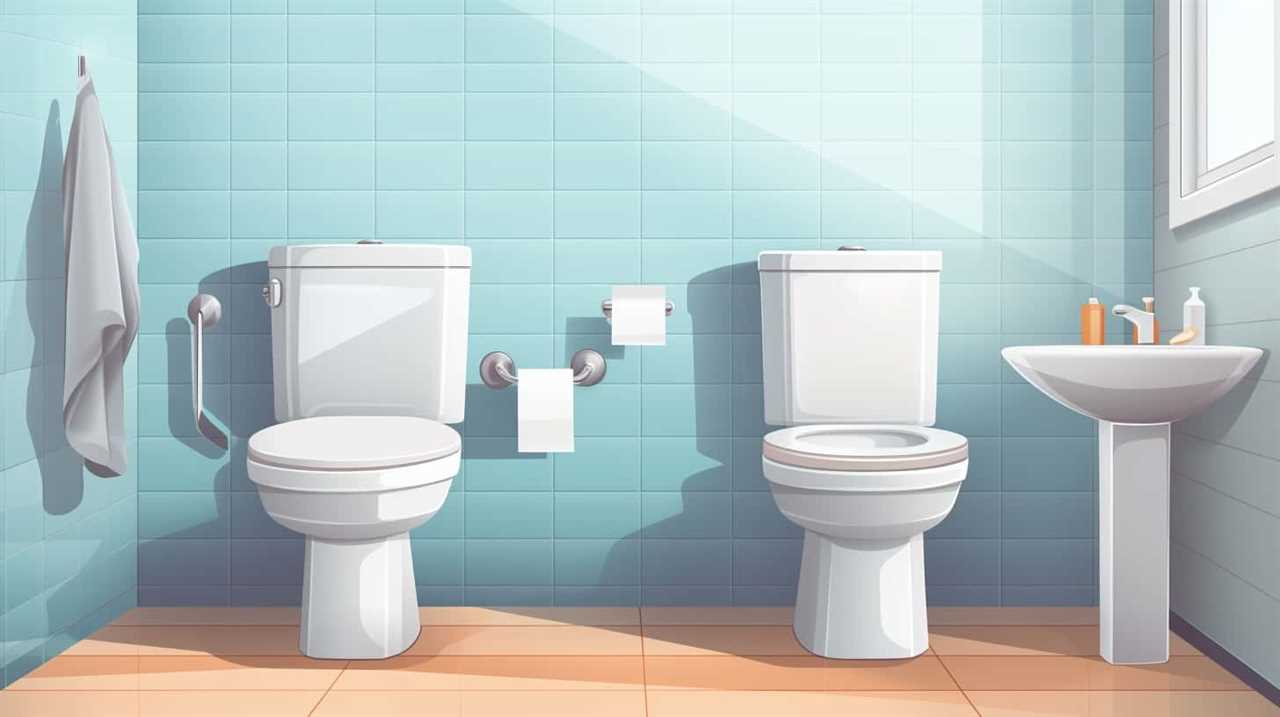
Moreover, it has adverse environmental consequences, contributing to sewer blockages and water pollution. Instead, it’s recommended to dispose of tissue paper in a waste bin or consider using alternatives such as biodegradable toilet paper.
Let’s remember to be mindful of our actions and make responsible choices to protect our plumbing systems and the environment.
With an impeccable eye for detail and a passion for bathroom-related, Ava leads our editorial team gracefully and precisely.
Under her guidance, Best Modern Toilet has flourished as the go-to resource for modern bathroom enthusiasts. In her free time, you might find Ava exploring antique shops and looking for vintage bathroom fixtures to add to her collection.
-

 FAQ - Advanced Bathroom Queries3 months ago
FAQ - Advanced Bathroom Queries3 months agoWhat Happens if You Sit on the Toilet Too Long
-

 FAQ - Advanced Bathroom Queries3 months ago
FAQ - Advanced Bathroom Queries3 months agoWhy Is My Toilet so Loud When Refilling
-

 Guides3 months ago
Guides3 months agoTroubleshooting Dropping Water Level in Toilet Bowl: Causes and Solutions
-

 Toilet Brands3 months ago
Toilet Brands3 months agoCountries Where You Can’t Flush Toilet Paper
-

 Guides3 months ago
Guides3 months agoChoosing the Right Toilet Flange: A Comprehensive Guide
-

 Guides3 months ago
Guides3 months agoToilet Water Supply Line Sizes: Finding the Right Fit
-

 FAQ - Advanced Bathroom Queries3 months ago
FAQ - Advanced Bathroom Queries3 months agoWhat Happens When You Put Baking Soda in Your Toilet
-

 Guides3 months ago
Guides3 months agoHow to Remove Crystallized Urine From Toilet Bowl





















